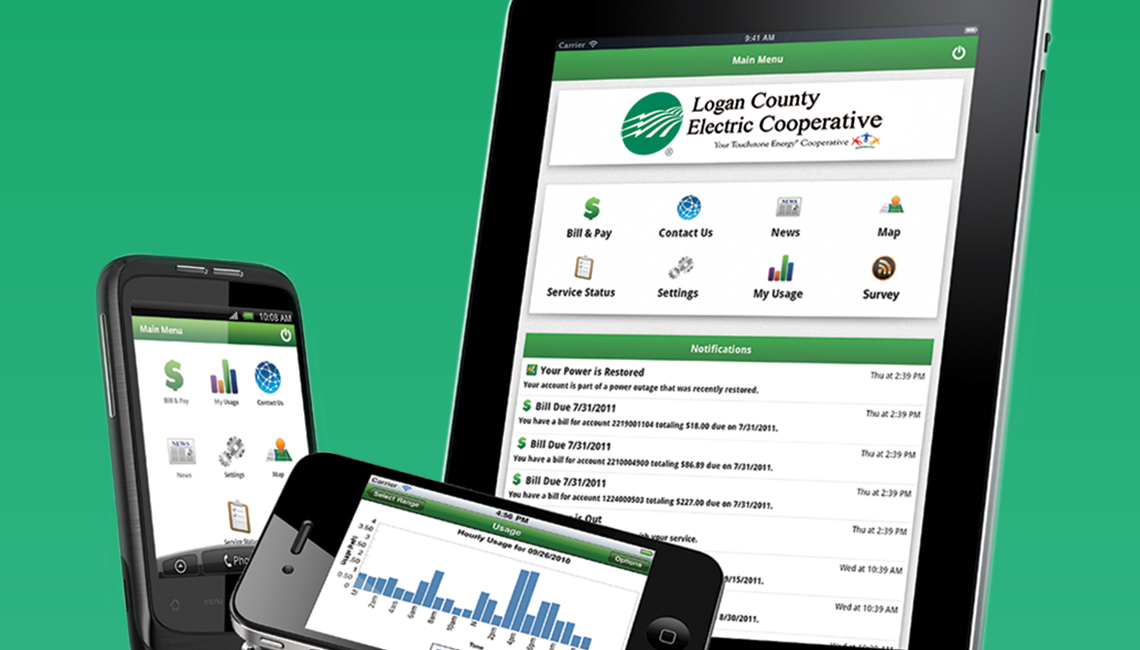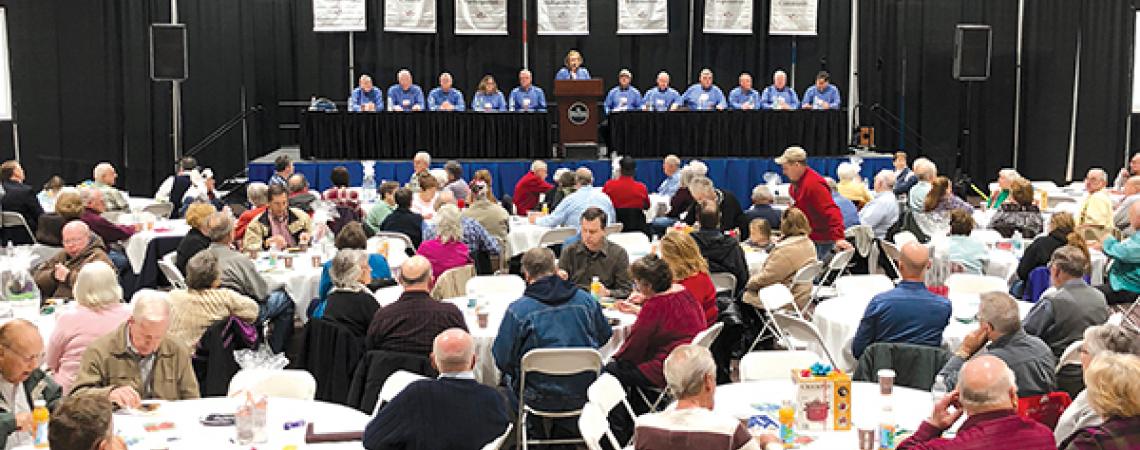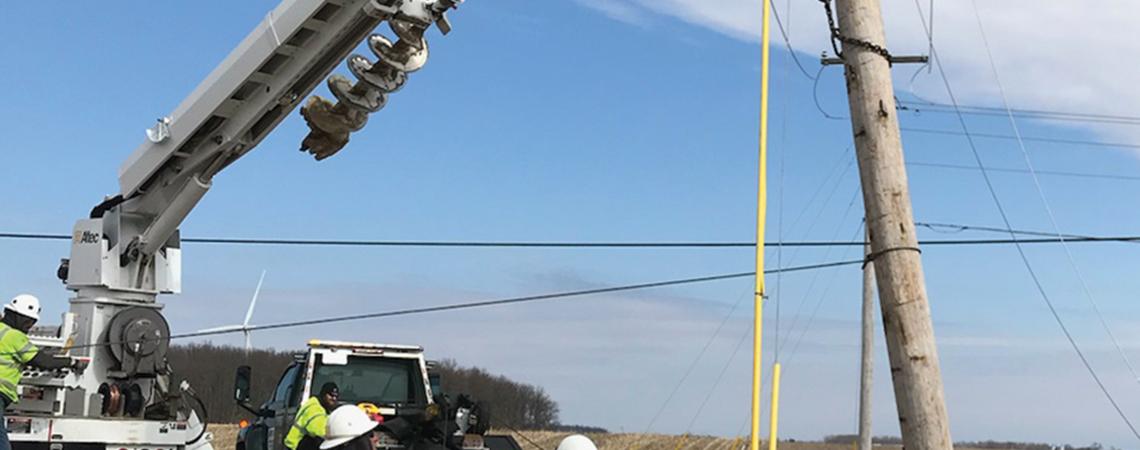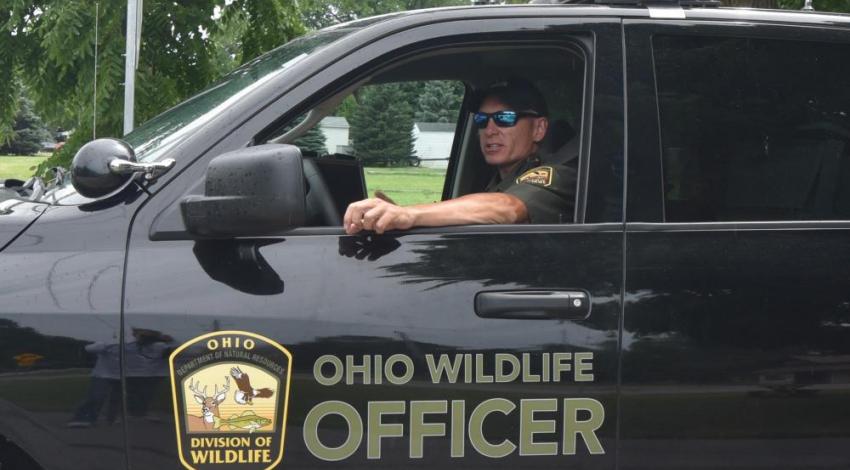For customers of an investor-owned utility like AEP or Dayton Power and Light, communication with their electric company probably extends no further than paying their bill or finding out how long an outage might last. Certainly, these are important aspects of communication, but consumer-members of an electric cooperative find they have opportunities to engage on a deeper level.
Good communications efforts help members understand the workings of the co-op and lead to increased satisfaction and participation in governance — such as at this pre-pandemic annual meeting.
“Members who are engaged are the ones who will attend the annual meeting — for more than just the chance of getting a bill credit,” says Michael Wilson, director of communications at Logan County Electric Cooperative, based in Bellefontaine. “Without engaged and educated members, the cooperative business model could not exist.”
Effective communications, then, is one of the most important services a cooperative can provide. “For outages, timely communication is key,” says Mark Owen, communications manager at Lancaster-based South Central Power Company. “Members want to know what’s happening with outage situations in near real time, and fortunately, today’s technology helps us do that.”
Communicating with members on a regular basis, however, also allows them to understand the real value they receive from the co-op — beyond just having the lights come on when they flip a switch or finding out that a tree branch has fallen on a line and caused an outage.
“We have been long focused on providing not just the information we think our members need to have and understand, but on identifying and delivering the information they think they need and want,” says Nanci McMaken, vice president and chief communications officer at Pioneer Electric Cooperative in Piqua. “It’s really at the heart of everything we do in communications.”
“Members may see the price per kilowatt-hour on their bills and might think that’s where the value stops,” Wilson says. “Do they know about the scholarships we provide to local students, the grants offered through Operation Round Up, the sponsorships we provide to local organizations, the safety and energy efficiency education we provide? Every co-op was created by the local community, and our service goes well beyond just a light switch and a bill. All of those pieces go into what makes the co-op different, and we try to communicate that as often and in as many ways as we can.”
Engaged members who know and understand issues are able — and hopefully willing — to advocate on behalf of the co-op, either with public officials in the face of adverse legislation or with neighbors in the face of unreasonable complaints. More than that, they will make informed votes in trustee elections and perhaps even go even further and run for the board of trustees themselves. Democratic member control is one of the guiding principles of all cooperatives, and that would be impossible without members who understand what the co-op is all about.
Ohio electric cooperatives have numerous methods at their disposal to be able to reach as many of their members as possible. The immediacy of text messaging, social media, and app notifications is crucial when members lose power unexpectedly, but not every medium works for every message.
Ohio Cooperative Living magazine, for example, is the first place many members find news about the co-op — dates of important meetings, changes in business practices, alerts about utility scams, efficiency tips, and more. Co-ops also place inserts with members’ electric bills, send out direct-mail pieces, post to social media, and update their individual websites.
“The more ways we can communicate with our members, the better,” says Leslie Guisinger, director of marketing and communications at Hancock-Wood Electric Cooperative, based in North Baltimore. “We want to get information out as soon as possible and use every appropriate avenue. The sooner we begin to let people know we intend to enact a rate change, for example, the more time they can prepare. We also do a lot of communicating about capital credits, because that’s an important part of co-op membership.”
Of course, talking with members is still one of the most important tools in the box, one that cooperatives know makes a difference when it comes to their members’ experience versus that of an investor-owned utility customer. “One of the most critical communicators for the co-op is the operations team member who engages with frustrated members,” Wilson says. “That face-to-face communication in a difficult time can do more to explain the cooperative difference than a thousand words written on a page.”











